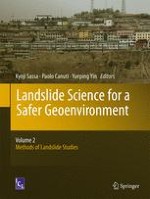2014 | OriginalPaper | Buchkapitel
 The Dynamic Process and Sensitivity Analysis for Debris Flow
The Dynamic Process and Sensitivity Analysis for Debris Flow
verfasst von : Guoqiang Yu, Maosheng Zhang, Hong Chen
Erschienen in: Landslide Science for a Safer Geoenvironment
Aktivieren Sie unsere intelligente Suche, um passende Fachinhalte oder Patente zu finden.
Wählen Sie Textabschnitte aus um mit Künstlicher Intelligenz passenden Patente zu finden. powered by
Markieren Sie Textabschnitte, um KI-gestützt weitere passende Inhalte zu finden. powered by
